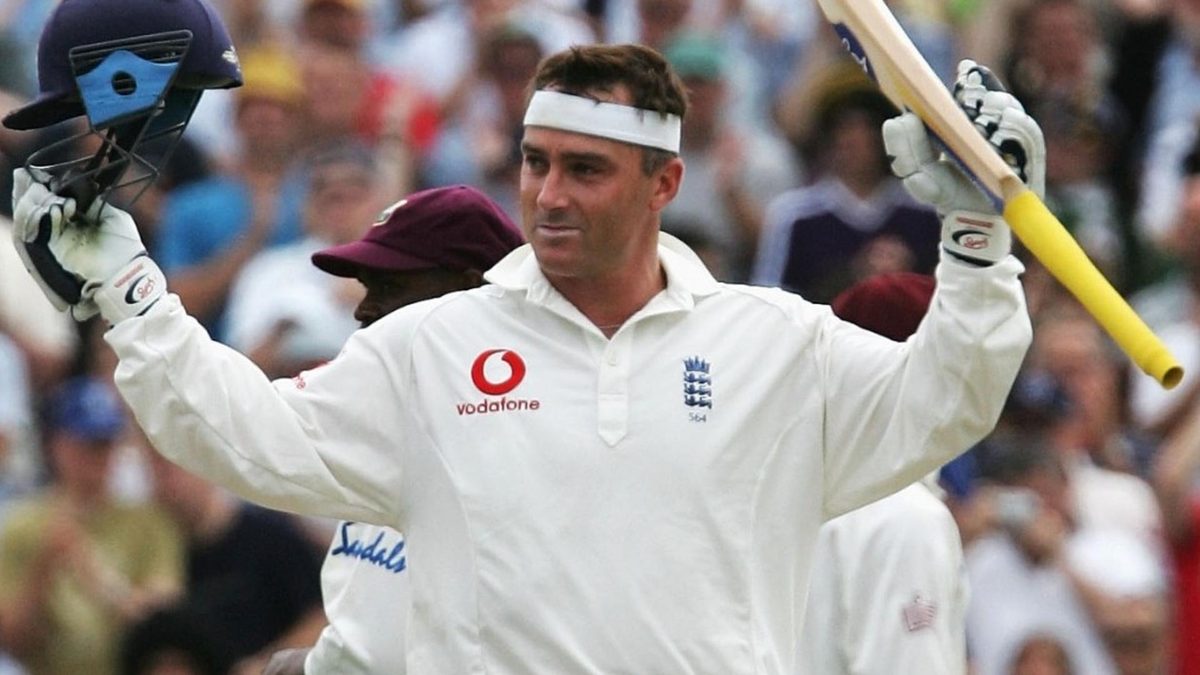
Introducing the latest edition of Wisden Cricket Monthly, editor-in-chief Phil Walker pays tribute to the life and career of the great Surrey and England left-hander, Graham Thorpe - an everyman hero touched by magic
Cricket’s family grasps the barrier, steadies itself, reels again. Graham Thorpe has died. They all hurt. But this one’s unbearable. That he left us slowly, and in pain, and so crushingly unresolved. He was 55.
The news came through two days before this magazine had to be finished, so the grief feels raw and cloying as I write this. When Shane Warne went – just seven weeks separated them in age – the numbness soon gave way to salutations. The game, rousing itself, put on a great show for the great showman. Australia laid on a state funeral, near enough. It was commensurate.
How to commemorate this, though? What will happen from here? When the poignancy feels irreplaceable, the comforts of remembrance so utterly confined? Arriving at work this morning, I found a single framed photograph of Thorpe, taken in his Surrey pomp, hanging on the railings of the Edrich Gate. On the ground below it, a single bunch of flowers, with a single handwritten note from a single mourner. Thorpe, it says, was their cricketing hero. It looks isolated, that note and bouquet, lying there on the pavement. But it’s not, is it? Tell me it’s not. Tell me it’s a single line that speaks for a generation.
I was 13 when he first came around. It was July 1993; Warne, a month into the Ashes, was already running amok. This was no country for old men yet there they’d all been, plodding along, clogging things up. England were already two-nil down and desperate before they dared look to the youth of Thorpe and Nasser Hussain.
At Trent Bridge, Nasser made runs in the first innings, and Thorpe a century in the second. I watched the lot. The hook shot that got him his hundred, a bit top-edgy, a quarter-chance that ended up bouncing over Michael Slater’s head, was my shot of the summer. So, that shot seemed to say, it didn’t always go to hand after all. The sweatband celebration, bashful smile, the shock of the new. He was young, cool, and could bat. I wondered if this game might not be such a let-down after all. By the end of that summer, via the opening bat at my club, I’d got myself a Kookaburra Gold Crown. Thorpey’s bat.
That winter, touring the West Indies, Thorpe stood at gully watching Brian Lara and taking notes. By the summer of 1994, with a more pronounced backlift and a bit quicker on his toes, he tore into South Africa’s quicks. (His first 25 Test matches – spread-out affairs, pockmarked by a series of inexplicable omissions – came against a combination of Australia, West Indies and South Africa.) They bombed him at Headingley, and Thorpe, newly returned to the line-up, took them for a pair of seventies, 23 fours in all. It lodged in my mind a belief, still held, that nothing else in cricket comes close to the ineffable majesty of a quickfire 70-odd.
Warne gave Australia its Nineties shimmer. Thorpe, in turn, fretting with his bat grips, worrying about selection, hounded by the tabloids for the crime of a broken marriage, offered the English an equally apposite version of themselves. He had his demon days, when private traumas encroached so far into the day job that he withdrew from the field; in a world of straight backs and tight lips he was never less than achingly human. And as for the good days, well, they were marvellous.
Hussain said not so long ago that when debates start up about all-time England XIs, Thorpe’s name gets mysteriously lost somewhere. He has a point. As if an average of 44, spread evenly home and away, in a struggling team, against Ambrose, Walsh, Warne, Donald, Murali, Wasim and the rest, is no more than useful.
The reason might have something to do with the absence of completeness. When he returned from self-imposed exile in 2003 with that cathartic Oval century against South Africa, an innings met by an ovation so heartfelt that Ian Smith on commentary was moved to wonder (with terrible prescience) if a sportsman might ever feel so good again, it began an autumnal run of fun that so nearly bled into the Ashes of 2005.
The year before, at Barbados, he’d made an unbeaten 119 on a danger track that was so good that England’s next highest score was 17. Leading into the 2005 summer, he had compiled five Test hundreds in 23 matches, knocks of immense technical intelligence, packed with the accumulation of two decades’ learning scavenged from deep in the guts of a game that only truly rewards those who can withstand it.
Then Kevin Pietersen happened. Thorpe quietly retired a few weeks later, midway through the series.
The years that followed saw him establish himself as a considered and empathetic coach, whose ability to disassemble and articulate the minutiae of batting set him apart as one of the best. Latterly, harrowingly, the good days thinned out. After 2022, he was rarely if ever seen at a cricket ground. Now his picture hangs at an angle on the Oval gates; and with his passing goes another small shard of ourselves. What a player.
Pre-order Wisden Cricket Monthly issue 80 here.








